Abstract
Piperacillin as a single agent was compared in a prospective randomized trial with carboxypenicillin-aminoglycoside combinations in empirical therapy of serious bacterial infections. The difference in the clinical response rates with piperacillin (77% of 26 infection episodes) and combination therapy (75% of 24 infection episodes) were not statistically significant. Fewer adverse effects occurred in the piperacillin-treated group (42%) than in the combination-treated group (71%) (P = 0.0399 by Fisher's exact test), although neither nephrotoxicity nor hypokalemia alone was significantly less frequent in patients receiving piperacillin. However, the emergence of resistant organisms during therapy was more frequent among patients receiving piperacillin alone (42% of patients) than among patients receiving combination therapy (17% of patients) (P = 0.465 by Fisher's exact test). Moreover, emergence of resistance accounted for 5 of 9 patients with treatment failure, superinfection, or both when piperacillin was used as a single agent, compared with 2 of 10 similar patients in the combination group (P = 0.1299 by Fisher's exact test). The use of piperacillin as a single agent in the treatment of serious bacterial infections is not advocated, and the addition of an aminoglycoside to prevent emergence of resistance during empirical therapy of such infections is strongly recommended.
Full text
PDF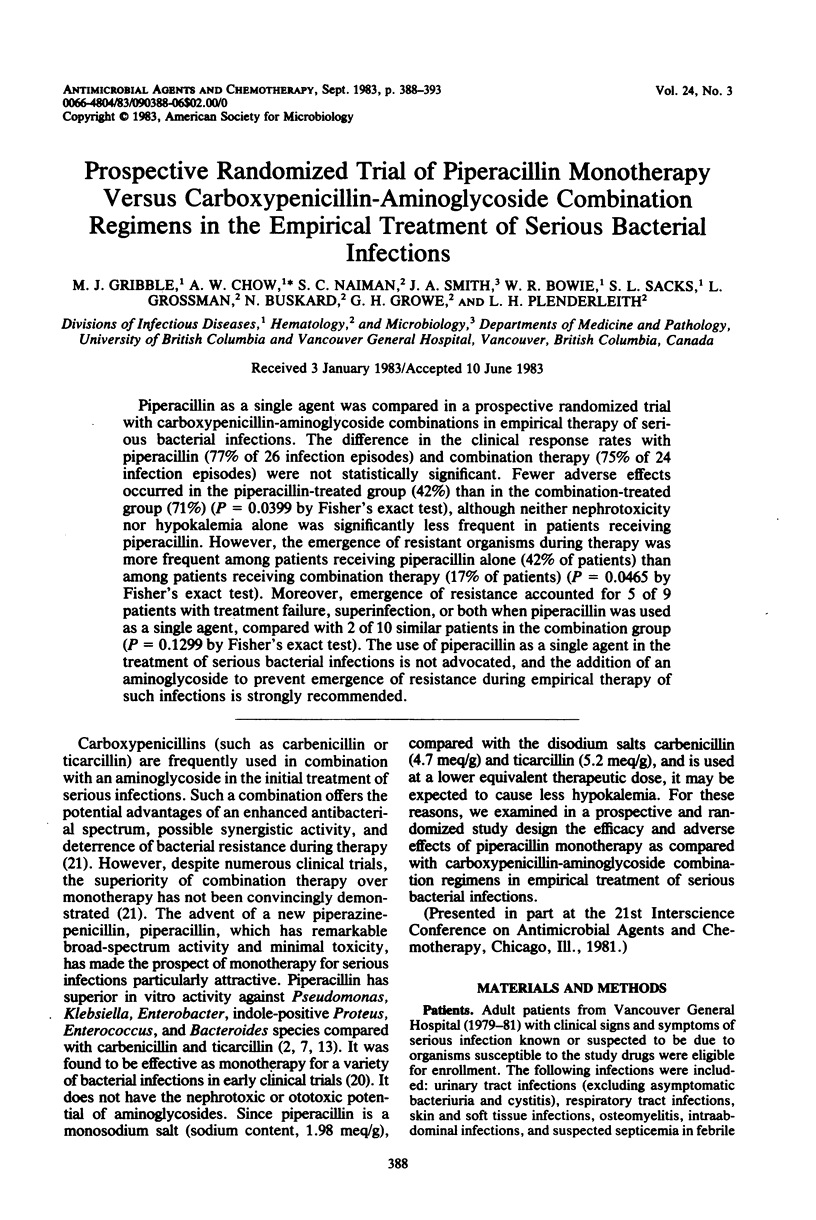
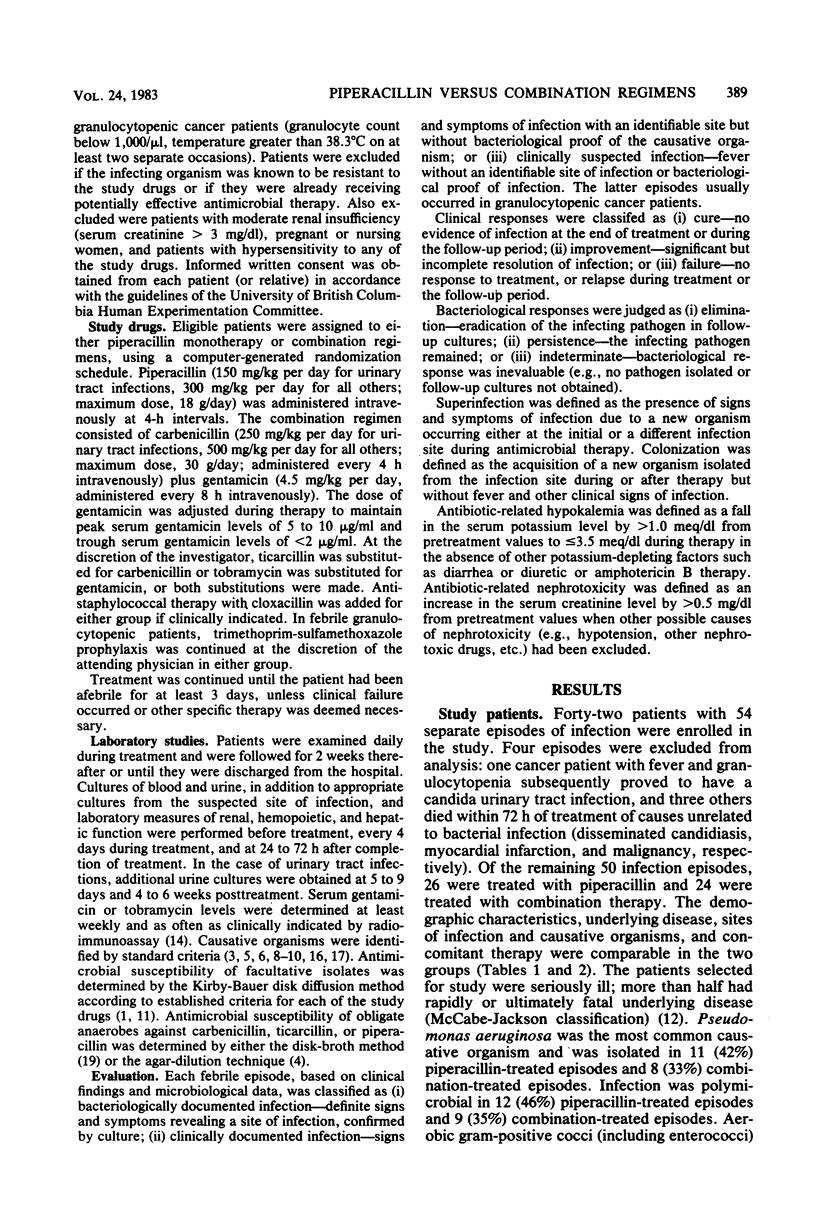
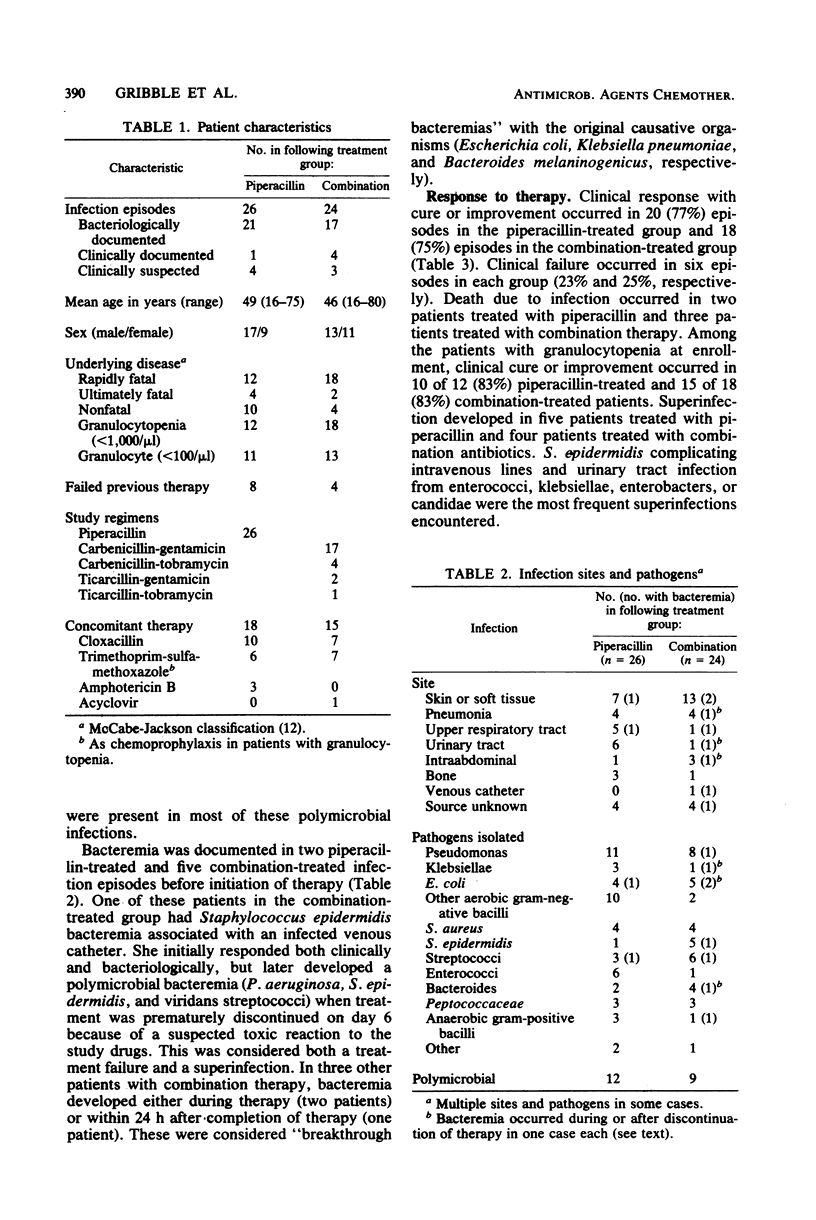
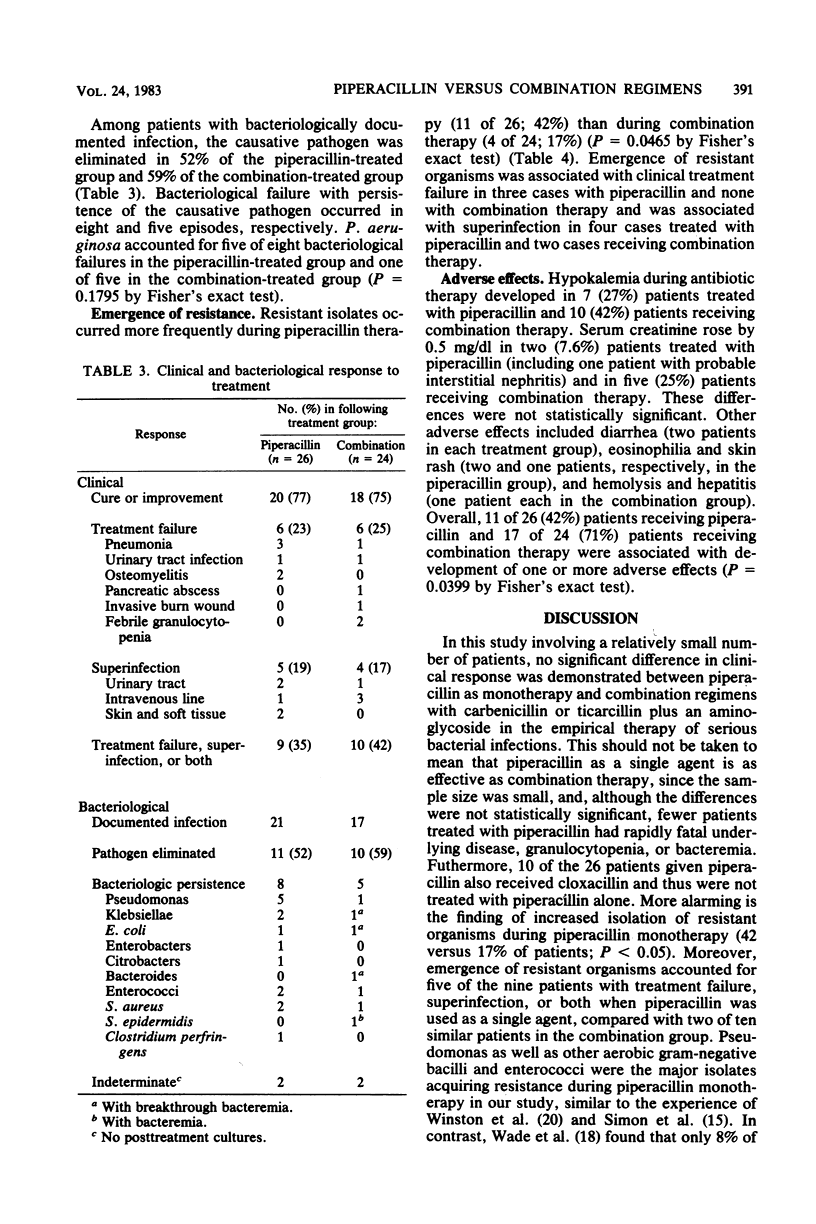
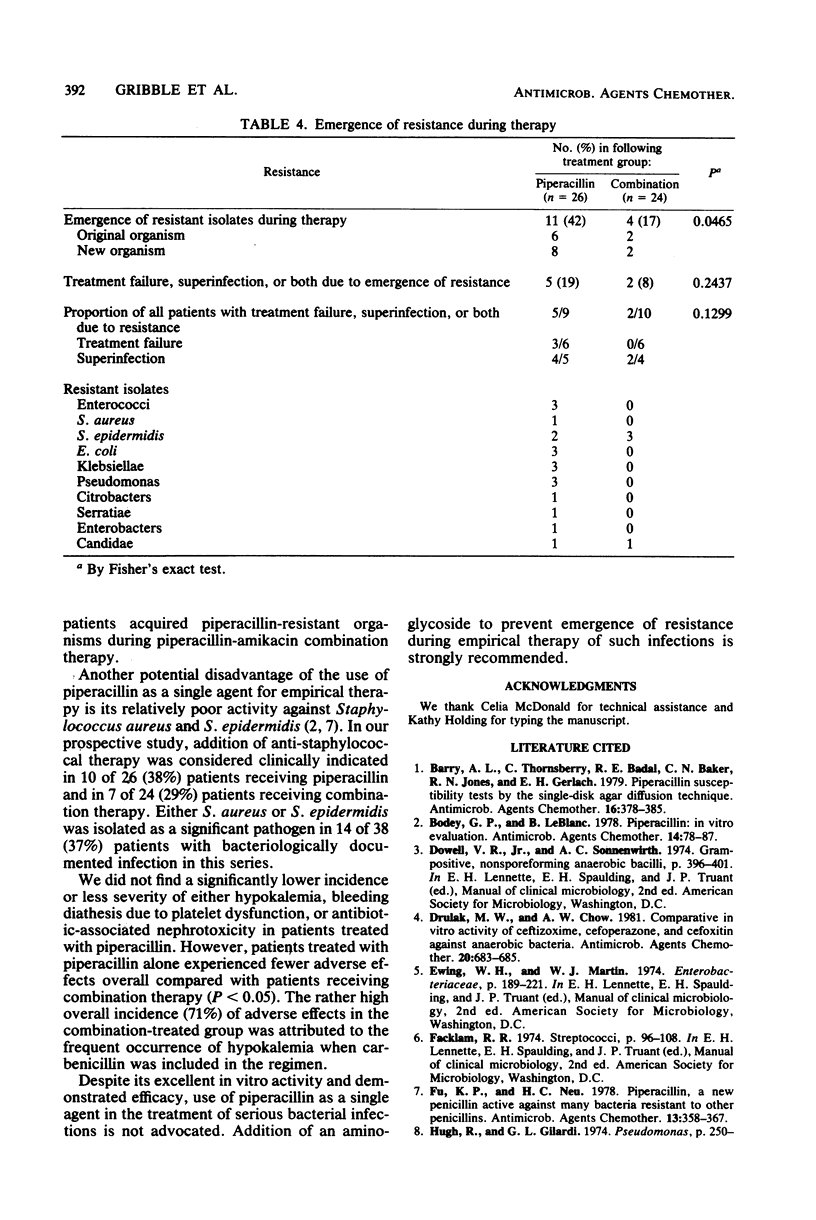
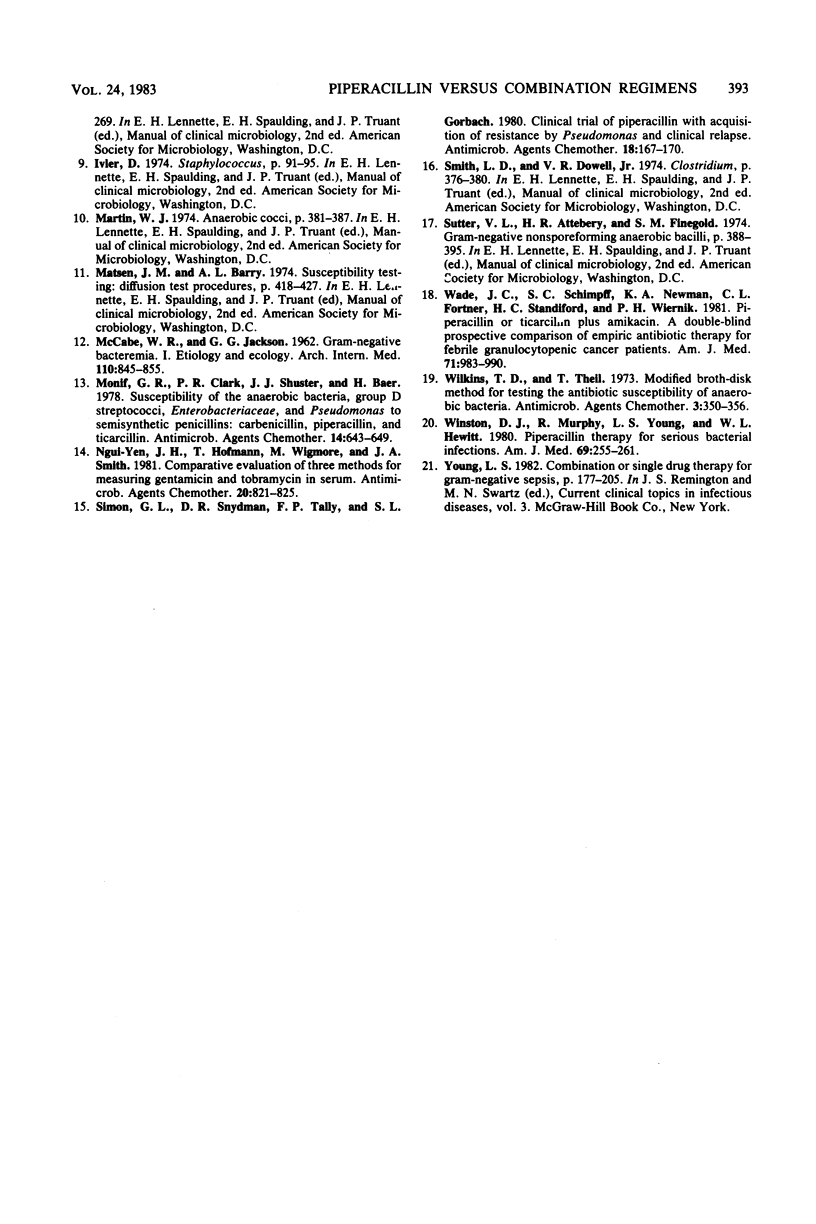
Selected References
These references are in PubMed. This may not be the complete list of references from this article.
- Barry A. L., Thornsberry C., Badal R. E., Baker C. N., Jones R. N., Gerlach E. H. Piperacillin susceptibility tests by the single-disk agar diffusion technique. Antimicrob Agents Chemother. 1979 Sep;16(3):378–385. doi: 10.1128/aac.16.3.378. [DOI] [PMC free article] [PubMed] [Google Scholar]
- Bodey G. P., Le Blanc B. Piperacillin: in vitro evaluation. Antimicrob Agents Chemother. 1978 Jul;14(1):78–87. doi: 10.1128/aac.14.1.78. [DOI] [PMC free article] [PubMed] [Google Scholar]
- Drulak M. W., Chow A. W. Comparative in vitro activity of ceftizoxime, cefoperazone, and cefoxitin against anaerobic bacteria. Antimicrob Agents Chemother. 1981 Nov;20(5):683–685. doi: 10.1128/aac.20.5.683. [DOI] [PMC free article] [PubMed] [Google Scholar]
- Fu K. P., Neu H. C. Piperacillin, a new penicillin active against many bacteria resistant to other penicillins. Antimicrob Agents Chemother. 1978 Mar;13(3):358–367. doi: 10.1128/aac.13.3.358. [DOI] [PMC free article] [PubMed] [Google Scholar]
- Monif G. R., Clark P. R., Shuster J. J., Baer H. Susceptibility of the anaerobic bacteria, group D streptococci, Enterobacteriaceae, and Pseudomonas to semisynthetic penicillins: carbenicillin, piperacillin, and ticarcillin. Antimicrob Agents Chemother. 1978 Nov;14(5):643–649. doi: 10.1128/aac.14.5.643. [DOI] [PMC free article] [PubMed] [Google Scholar]
- Ngui-Yen J. H., Hofmann T., Wigmore M., Smith J. A. Comparative evaluation of three methods for measuring gentamicin and tobramycin in serum. Antimicrob Agents Chemother. 1981 Dec;20(6):821–825. doi: 10.1128/aac.20.6.821. [DOI] [PMC free article] [PubMed] [Google Scholar]
- Simon G. L., Snydman D. R., Tally F. P., Gorbach S. L. Clinical trial of piperacillin with acquisition of resistance by Pseudomonas and clinical relapse. Antimicrob Agents Chemother. 1980 Jul;18(1):167–170. doi: 10.1128/aac.18.1.167. [DOI] [PMC free article] [PubMed] [Google Scholar]
- Wade J. C., Schimpff S. C., Newman K. A., Fortner C. L., Standiford H. C., Wiernik P. H. Piperacillin or ticarcillin plus amikacin. A double-blind prospective comparison of empiric antibiotic therapy for febrile granulocytopenic cancer patients. Am J Med. 1981 Dec;71(6):983–990. doi: 10.1016/0002-9343(81)90324-7. [DOI] [PubMed] [Google Scholar]
- Wilkins T. D., Thiel T. Modified broth-disk method for testing the antibiotic susceptibility of anaerobic bacteria. Antimicrob Agents Chemother. 1973 Mar;3(3):350–356. doi: 10.1128/aac.3.3.350. [DOI] [PMC free article] [PubMed] [Google Scholar]
- Winston D. J., Murphy W., Young L. S., Hewitt W. L. Piperacillin therapy for serious bacterial infections. Am J Med. 1980 Aug;69(2):255–261. doi: 10.1016/0002-9343(80)90386-1. [DOI] [PubMed] [Google Scholar]


